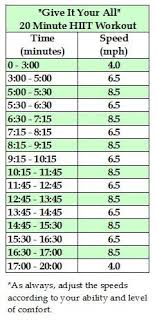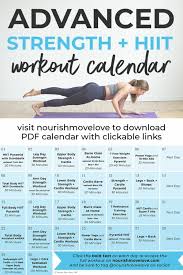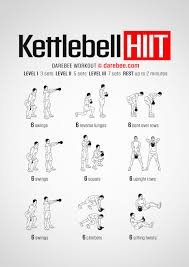The Benefits of HIIT Exercises
High-Intensity Interval Training (HIIT) has gained popularity in recent years as an effective workout method that offers numerous benefits for both physical fitness and overall health.
Efficiency
HIIT workouts involve short bursts of intense exercise followed by brief rest periods. This format allows you to achieve a full-body workout in a shorter amount of time compared to traditional steady-state cardio exercises.
Fat Burning
HIIT is known for its ability to burn a high number of calories in a short period of time. The intense nature of HIIT exercises increases your metabolic rate, leading to continued calorie burn even after the workout is completed.
Cardiovascular Health
Engaging in HIIT exercises can improve your cardiovascular health by increasing your heart rate and strengthening your heart muscles. Regular HIIT workouts have been shown to lower blood pressure and improve overall heart function.
Muscle Tone and Strength
HIIT workouts incorporate strength training exercises, such as bodyweight exercises or using weights, which help build muscle tone and strength. This combination of cardio and strength training leads to improved muscle definition and increased overall fitness.
Versatility
HIIT exercises can be adapted to suit individuals at different fitness levels. Whether you’re a beginner or an experienced athlete, you can modify the intensity and duration of HIIT workouts to challenge yourself and achieve your fitness goals.
Mental Health Benefits
In addition to physical benefits, HIIT exercises have been shown to have positive effects on mental health. The release of endorphins during high-intensity workouts can boost mood, reduce stress levels, and improve overall mental well-being.
If you’re looking for a time-efficient workout that delivers results, consider incorporating HIIT exercises into your fitness routine. Consult with a fitness professional to design a personalized HIIT program that aligns with your goals and abilities.
Your Guide to HIIT: Answers to 8 Common Questions About High-Intensity Interval Training
- What is HIIT?
- How does HIIT differ from traditional cardio workouts?
- What are the benefits of HIIT exercises?
- Are HIIT workouts suitable for beginners?
- How often should I do HIIT exercises per week?
- Can I do HIIT exercises at home without equipment?
- Are there any risks or precautions to consider when doing HIIT?
- How can I create a personalized HIIT workout plan?
What is HIIT?
High-Intensity Interval Training (HIIT) is a popular workout method that involves alternating between short bursts of intense exercise and brief periods of rest or lower-intensity activity. This type of training is designed to push your body to its limits in a shorter amount of time, making it an efficient way to improve cardiovascular fitness, burn calories, and build strength. HIIT workouts can be tailored to individual fitness levels and goals, making them accessible to beginners and experienced athletes alike. The intense nature of HIIT not only challenges your body but also offers a range of benefits for overall health and well-being.
How does HIIT differ from traditional cardio workouts?
High-Intensity Interval Training (HIIT) differs from traditional cardio workouts in its approach to exercise intensity and duration. While traditional cardio workouts typically involve steady-state aerobic exercises performed at a moderate intensity for an extended period of time, HIIT alternates between short bursts of high-intensity exercise and brief rest or recovery periods. This variation in intensity challenges the body in different ways, leading to increased calorie burn, improved cardiovascular fitness, and enhanced muscle tone. HIIT is known for its time efficiency, as it can deliver similar or even greater benefits compared to longer cardio sessions in a shorter amount of time. The intense nature of HIIT also triggers a phenomenon called excess post-exercise oxygen consumption (EPOC), where the body continues to burn calories at an elevated rate even after the workout is completed.
What are the benefits of HIIT exercises?
High-Intensity Interval Training (HIIT) exercises offer a multitude of benefits that make them a popular choice for fitness enthusiasts. The key advantages of HIIT workouts include their efficiency in providing a full-body workout in a shorter time frame compared to traditional cardio exercises. Additionally, HIIT is known for its effectiveness in burning calories both during and after the workout, thanks to its ability to elevate the metabolic rate. Furthermore, engaging in HIIT exercises can improve cardiovascular health, enhance muscle tone and strength, and contribute to positive mental well-being by releasing endorphins that boost mood and reduce stress levels. These combined benefits make HIIT exercises a versatile and effective option for individuals looking to achieve their fitness goals efficiently.
Are HIIT workouts suitable for beginners?
High-Intensity Interval Training (HIIT) workouts can be suitable for beginners, but it’s important to approach them with caution and proper guidance. Beginners should start with low-impact exercises and gradually increase the intensity as they build strength and endurance. Consulting with a fitness professional or trainer can help beginners create a customized HIIT workout plan that aligns with their fitness level and goals. It’s essential for beginners to listen to their bodies, take breaks when needed, and focus on proper form to prevent injuries while reaping the benefits of HIIT exercises.
How often should I do HIIT exercises per week?
When it comes to the frequency of HIIT exercises per week, it is recommended to aim for 2-3 sessions to allow for adequate recovery and maximize results. HIIT workouts are intense and place a significant demand on the body, so giving yourself time to rest and recover between sessions is crucial for avoiding burnout and injury. Incorporating HIIT workouts into your weekly routine can help you achieve your fitness goals effectively while ensuring that you maintain a balance between challenging your body and allowing it to recover. Listen to your body’s signals and adjust the frequency based on how you feel, ensuring that you prioritize consistency and sustainability in your workout regimen.
Can I do HIIT exercises at home without equipment?
Yes, you can definitely do HIIT exercises at home without any equipment. HIIT workouts are versatile and can be modified to suit your fitness level and available space. Bodyweight exercises such as squats, lunges, burpees, high knees, mountain climbers, and plank variations are excellent choices for a home HIIT workout. You can also incorporate cardio movements like jumping jacks or running in place to elevate your heart rate during the high-intensity intervals. With a bit of creativity and motivation, you can enjoy the benefits of HIIT training right in the comfort of your own home.
Are there any risks or precautions to consider when doing HIIT?
When engaging in High-Intensity Interval Training (HIIT), it is important to be aware of potential risks and take necessary precautions to ensure a safe workout experience. Some considerations to keep in mind include the risk of overexertion and injury due to the intense nature of HIIT exercises. It is crucial to listen to your body, start at a manageable intensity level, and gradually increase the difficulty as your fitness improves. Proper warm-up and cooldown routines are essential to prevent muscle strains or other injuries. Additionally, individuals with pre-existing health conditions or injuries should consult with a healthcare provider before starting a HIIT program to determine if it is suitable for their specific needs. By being mindful of these risks and taking appropriate precautions, you can enjoy the benefits of HIIT while minimizing potential adverse effects.
How can I create a personalized HIIT workout plan?
Creating a personalized HIIT workout plan involves several key steps to ensure it aligns with your fitness goals and abilities. Start by determining your fitness level and identifying specific areas you want to target, whether it’s fat loss, muscle tone, or cardiovascular endurance. Next, choose a mix of high-intensity exercises that engage different muscle groups and vary in intensity. Incorporate rest intervals between each exercise to allow for recovery. Adjust the duration and intensity of each interval based on your fitness level, gradually increasing the challenge as you progress. It’s essential to listen to your body, stay hydrated, and maintain proper form throughout the workout to prevent injury. Consulting with a fitness professional can also help tailor a HIIT plan that is safe, effective, and tailored to your individual needs.




